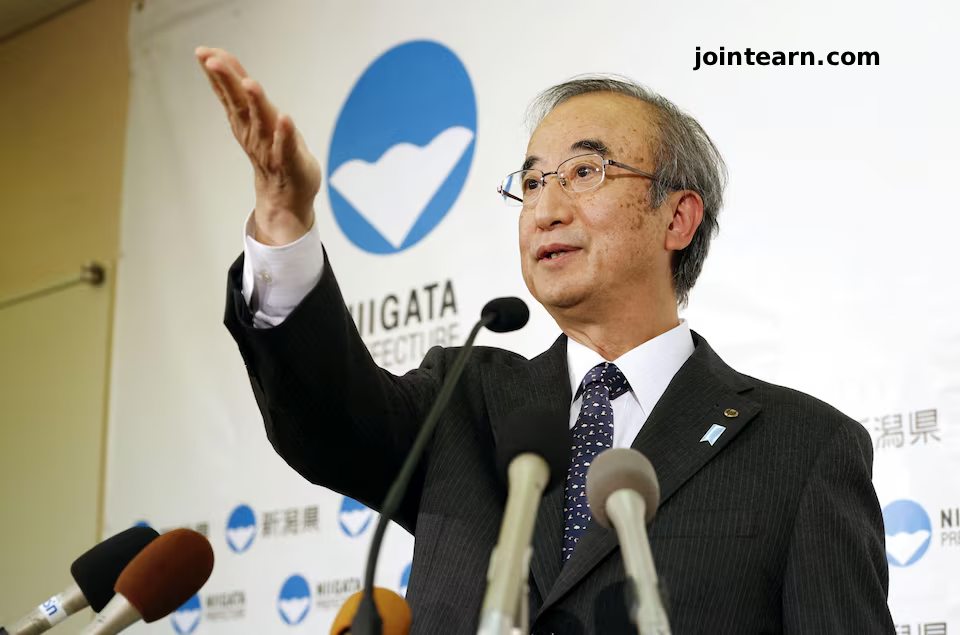
TOKYO, November 21, 2025 – Japan took a major step toward reviving its nuclear energy sector as Niigata Prefecture Governor Hideyo Hanazumi approved a partial restart of the Kashiwazaki-Kariwa nuclear power plant, the world’s largest nuclear facility. The decision clears the final major regulatory hurdle for Tokyo Electric Power Co (TEPCO) (9501.T) to restart one or two of the plant’s largest reactors, marking a pivotal moment for Japan’s energy security and fossil fuel import reduction efforts.
Energy Demand and Reactor Restart
The restart comes amid growing electricity demand driven by expansion in the data center and semiconductor industries. Governor Hanazumi noted that “it would be difficult to stop something that passed the country’s regulatory standards without any rational reason.” He will seek a prefectural assembly vote of confidence on December 2 to formally confirm the decision, while continuing to address local residents’ safety concerns and emergency preparedness.
According to Japan’s industry minister Ryosei Akazawa, the restart will involve reactors No.6 and No.7, the two largest units at the plant. Unit No.6 alone could improve Tokyo’s electricity supply-demand balance by approximately 2%. Combined, these reactors produce 2,710 megawatts, roughly one-third of Kashiwazaki-Kariwa’s total capacity of 8,212 MW. TEPCO plans to decommission some of the other five units at the facility.
TEPCO’s Nuclear Restart Milestone
The restart will be the first for TEPCO since the 2011 Fukushima Daiichi disaster, which led to the shutdown of all 54 nuclear reactors in Japan at the time. Since then, Japan has relied heavily on imported fossil fuels, which are vulnerable to global supply disruptions. As of 2025, only 14 of 33 operable reactors have resumed operations, highlighting the significance of this restart for energy security.
In October, TEPCO completed checks on Reactor No.6, confirming that all main systems required for startup were operating properly, making it the priority unit for restart.
Government Support and Energy Security
Prime Minister Sanae Takaichi, who took office last month, supports further nuclear relaunches to strengthen energy security and curb the cost of imported energy, which currently accounts for 60% to 70% of Japan’s electricity generation. Last year, Japan spent 10.7 trillion yen ($68 billion) on imported liquefied natural gas (LNG) and coal, representing a tenth of total import costs.
Chief Cabinet Secretary Minoru Kihara emphasized that the restart is crucial for reducing electricity prices and securing decarbonized power sources. Commodity analysts at Kpler predict that higher nuclear availability, including Unit No.6, could reduce Japan’s LNG imports by 4 million metric tons to 62 million tons in 2026.
Broader Nuclear Developments in Japan
In July, Kansai Electric Power (9503.T), Japan’s top nuclear operator, announced surveys for a potential new reactor in western Japan, which would be the first nuclear unit constructed since the Fukushima disaster. TEPCO shares closed 1.9% lower following the news, while the Nikkei index fell 2.4%, partly due to concerns over mishandled confidential documents at the plant.
Japan continues to manage compensation claims stemming from the Fukushima Daiichi disaster, the world’s worst nuclear accident since Chernobyl in 1986. The Kashiwazaki-Kariwa restart represents both a strategic and symbolic step toward restoring nuclear energy as a cornerstone of Japan’s energy mix.
Leave a Reply